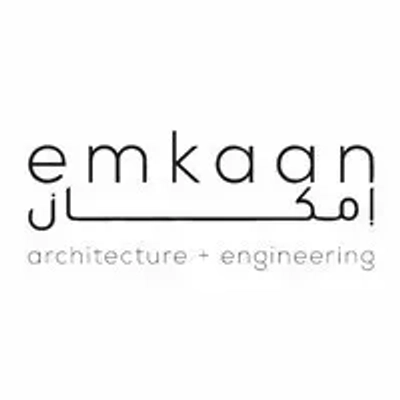How to Incorporate User Feedback to Improve Architectural Designs
Architectural designs become significantly more effective when shaped by real user experiences and needs. This article shares expert insights on collecting valuable feedback throughout the construction process, testing prototypes, and incorporating client ideas into practical solutions. Understanding how to systematically implement user feedback can transform ordinary architectural plans into spaces that truly serve their intended purpose.
Continuously Gather Feedback During Construction Process
User feedback is a core part of our design and build process. We've learned that no matter how skilled the architect or designer is, the homeowner's lived experience in the space brings valuable insights that can't be replicated on paper. We always start with detailed consultations to understand how clients actually use their outdoor spaces, where they want shade during the day, how they move between the patio and kitchen, and what kind of privacy or openness they prefer.
Throughout the project, we encourage continuous feedback through walkthroughs and progress reviews. One great example was a recent patio cover project where the homeowner mentioned halfway through construction that the afternoon sun still hit their seating area from a specific angle. We adjusted the design to extend the roofline and incorporated motorized shades on one side. That small piece of feedback completely changed the comfort level and usability of the space, especially during summer afternoons.

Prototype Testing Before Full System Development
Our design process includes user feedback since the initial planning phase. The system development process starts with clickable prototypes for key users before we apply their actual usage data to optimize system flows and screen designs. The approach proves more effective than creating complete systems first then checking if they match expectations.
The first version of our logistics portal portal failed to meet warehouse staff requirements for mobile usability. The team used user feedback to create easier input forms and mobile camera-based barcode scanning and they redesigned the React layout for tablet use. The implemented changes resulted in more than 30% faster task completion times and substantially reduced support ticket numbers.

Client Ideas Enhance Practical Design Solutions
It is important to take feedback from your clients at every stage because sometimes the most creative ideas come from them. Once we were working on a commercial project, our client suggested adding a small skylight above the central lounge area to improve natural lighting and Air circulation. This wasn't part of our initial plan, but after detailed discussions with our team, we decided to install the skylight. This small change significantly enhanced the entire project, bringing light into the space. Client feedback is always valuable, as it is based on real-life experiences and helps make the design more practical and user-friendly.

Post-Occupancy Evaluations Reveal Real-World Design Issues
Post-occupancy evaluations offer invaluable insights into how designs function in real-world conditions after building completion. These evaluations reveal practical issues that theoretical models often miss, such as traffic flow problems or unexpected uses of spaces. The feedback gathered directly from people who use the buildings daily highlights both successful elements and areas needing improvement.
Architects can use this information to refine not just the current project but also enhance future design approaches. This method bridges the gap between architectural theory and practical usage, creating more functional spaces. Consider implementing regular post-occupancy studies within six months of project completion to continuously improve your architectural practice.
Multiple Feedback Stages Prevent Costly Changes
Iterative feedback loops transform architectural design from a linear process into a dynamic conversation with future users. By gathering input at multiple stages—conceptual design, schematic development, and pre-construction—architects can make adjustments before changes become costly or impossible. This approach prevents the common problem of discovering design flaws after construction when modifications require significant expense and disruption.
Each round of feedback provides an opportunity to refine details and ensure the evolving design aligns with user needs and expectations. The iterative method builds trust with clients who see their input genuinely shaping the final outcome. Begin incorporating structured feedback sessions at key project milestones to create more successful and user-centered buildings.
Diverse User Interviews Capture Overlooked Perspectives
Structured interviews with diverse users capture crucial perspectives that might otherwise be overlooked in architectural design processes. Engaging with people of different ages, abilities, cultural backgrounds, and usage patterns reveals how the same space can be experienced in vastly different ways. These conversations often uncover accessibility challenges, cultural considerations, or functional requirements that designers might not initially anticipate.
The qualitative data from these interviews complements technical specifications by adding human context and emotional responses to spaces. Architects who master this approach create inclusive environments that work well for the broadest possible range of users. Start developing a comprehensive interview protocol that ensures representation from all potential user groups in your next project.
Transform Feedback Into Measurable Design Metrics
Creating measurable metrics for design solutions transforms subjective feedback into objective data that can guide architectural decisions. Metrics might track factors such as the time users spend in different areas, temperature comfort ratings, or the frequency of wayfinding confusion in complex buildings. This quantitative approach allows designers to establish baseline performance standards and then measure how effectively design changes address specific user concerns.
The metrics create accountability in the design process by defining clear success criteria agreed upon by both architects and clients. Measurement also reveals which design elements consistently receive positive feedback across multiple projects, helping to establish evidence-based best practices. Develop a custom set of performance metrics relevant to your specific project types and begin tracking outcomes systematically.
Annotated 3D Models Bridge Communication Gaps
Visualizing feedback through annotated 3D models transforms abstract user comments into actionable design modifications. This approach allows non-architects to precisely indicate their concerns or suggestions within the actual spatial context rather than trying to describe them with words alone. The visual feedback method bridges communication gaps between technical professionals and everyday users who may lack architectural vocabulary but understand exactly how they want to use a space.
These annotated models create a shared visual language that prevents misinterpretations and ensures user needs are accurately translated into design elements. The resulting documentation provides a clear record of user input that can be referenced throughout the design development process. Adopt digital annotation tools that allow stakeholders to interact directly with your 3D models during feedback sessions.

